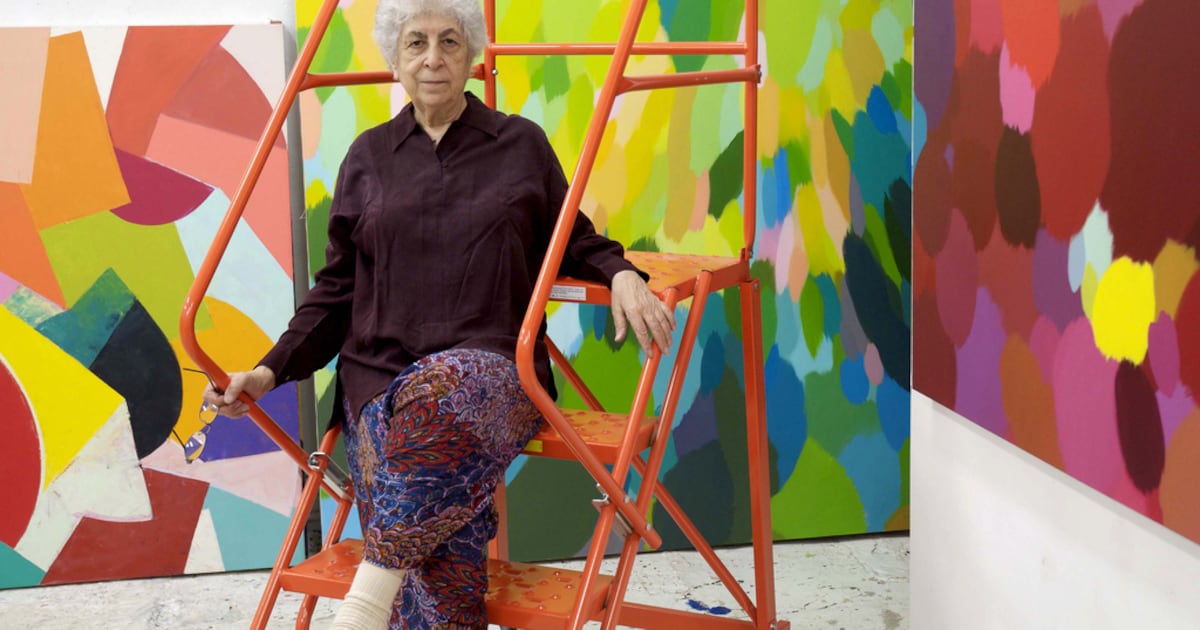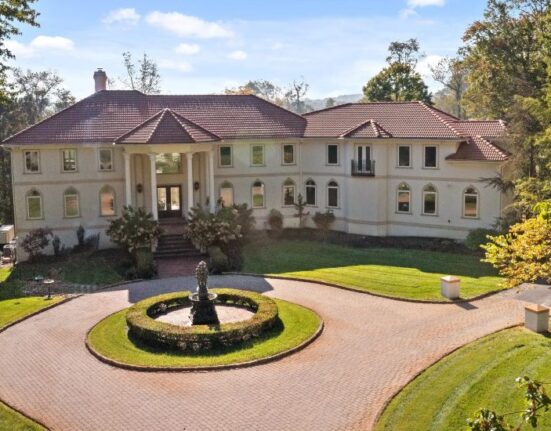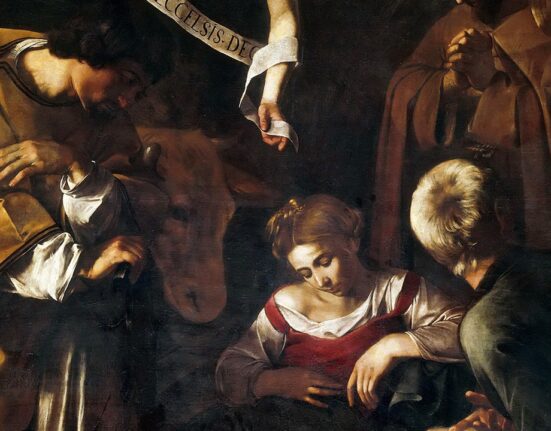As the weather cools and children head back to the classroom, out come the major shows from museums and galleries.
This month and next mark the best time to see art: the back-to-school reflex means smart, exacting shows are on the table as the public often feels recharged and ready to ask some big questions. Of course, children are still welcome visitors.
Here are some of the highlights to keep on your radar.
In the Shade of the Sun, London
The stellar programming at London’s The Mosaic Rooms continues with collaborations and exhibitions that address the complexities of politics and the aesthetic response to current events.
For its autumn show, it invites three young Palestinian artists, Mona Benyamin, Xaytun Ennasr and Dina Mimi, to showcase works reflecting on the past, present and future. The three work in video, performance, sound and text.
The show was conceived in collaboration with Bilna’es – a commissioning and music platform started by the artists Ruanne Abou-Rahme and Basel Abbas, the musician Muqata’a and others to support cultural production in Palestine.
The exhibition and platform show how developing the infrastructure necessary to make art has itself become a form of art-making in Palestine, as cultural producers in Ramallah and elsewhere turn their attention to the ways works are made and displayed.
Until January 14; The Mosaic Rooms, London
Where to Now? Vienna

As part of its “Curated By” strand, when the Krinzinger Schottenfeld gives over its programming to an independent curator, the Vienna space surveys the work of artists from the Gulf and wider region.
Curated by Verena Formanek, who is part of the team at the under-construction Guggenheim Abu Dhabi, the exhibition provides a cross-generational and regional framing of artists, who are understood as parts of separate art genealogies in the Gulf.
Subjects span Abdulnasser Gharem and Ahmed Mater’s curatorial formation of the Saudi art scene to Mohammed Kazem, Lamya Gargash and Layla Juma’s works as part of the early generations of UAE artists. It also includes younger artists such as Ramin Haerizadeh, Rokni Haerizadeh and Hesam Rahmanian and Radhika Khimji who speak to the Gulf as a place of intersection and exchange.
September 9 to October 14; Krinzinger Schottenfeld, Vienna
Chorus in Rememory of Flight, London
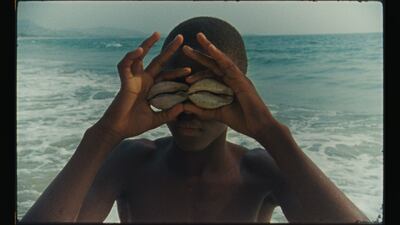
Born in Sierre Leone and raised in London, Julianknxx represents identity and legacy as tangled, complex and in motion. Fittingly, he crosses over mediums, both through established forms of expression – film and performance – and the types of expression that go beyond gallery walls, such as music and poetry.
In particular, he questions the legacy of his home country, which was one of the primary exit points for the West African slave trade, and racism that continues in the West today, with violence and discrimination still directed at black people.
This will be his first major solo show in the UK, taking over the Barbican Art Gallery’s The Curve. For the commissioned video he travelled to port cities across Europe – those that historically would have traded with Sierra Leone – and invited black choirs in those towns to sing one refrain: “We are what’s left of us.”
September 14 to February 11; Barbican Art Gallery, London
Lasting Impressions: Samia Halaby, Sharjah
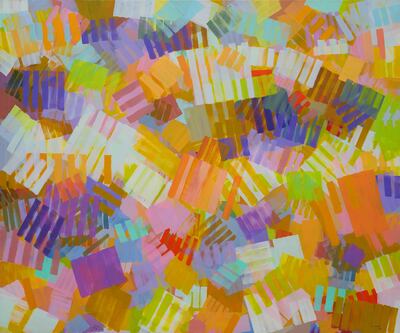
Sharjah Art Museum is hosting the region’s first large-scale retrospective of Samia Halaby. Born in 1936 in Jerusalem, the abstract painter moved to the US in the 1950s. At art school, she came across the American brand of abstraction that was then still dominant and refined this to ask questions about volume and perception.
Her Palestinian identity remained important both to her personally and professionally and she used her draughtsman skills in projects like Drawing the Kafr Qasem Massacre (2016) to document the 1956 event.
Later in her life, her computer projects came to light and her videos formed from coding have entered the public sphere as examples of a confluence between music, colour, technology and verve.
September 21 to January 7, Sharjah Art Museum
Marina Abramovic at Royal Academy of Arts, London
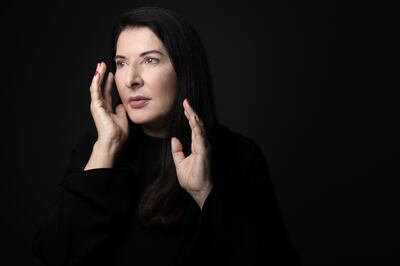
How do you stage a retrospective of work that is ephemeral, and which requires the artist to be there herself?
Over her decades-long career, Marina Abramovic has challenged art orthodoxy by charging the space with her very presence, so that the encounter becomes about the relationship between the artist and her audience, or between the artist and her collaborators, and the co-dependencies between the two.
For this major show at London’s Royal Academy of Arts, Abramovic now challenges norms of retrospectives of performance art – a field she helped establish. The artist has been training younger performers, who will be now taking up her artworks, in a rotating schedule of performances that ensures no two visits to the gallery are the same.
September 23 to January 1; Royal Academy of Arts, London
Talking in Dreams: Ofelia Rodriguez, Bristol
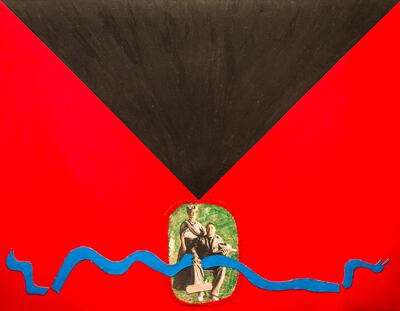
This exhibition at the outstanding art space Spike Island in Bristol, south-west England, provides a bittersweet chance to see the work of Ofelia Rodriguez, a Colombian artist who recently died. Her bright, flat paintings bring together a vocabulary of disconnected body parts, tropical motifs and the odd symbol that squarely does not belong – cherubs perching on clouds, or a hand-drawn turtle, perched within a collage.
While she lived in London for most of her adult life, her work often referred to the island of Barranquilla, on the Caribbean coast of Colombia. It examines the stereotypes of island life, but that is too dry a description of the weird and wonderful images and objects she collected and put on display throughout her life.
September 30 to January 14; Spike Island, Bristol
El Anatsui at Tate Modern, London
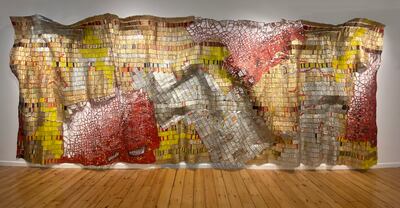
Where some artists use paint, El Anatsui uses simple bottle caps, stitching together the discarded objects to form long metal mosaics. Patterns reflect and shimmer; folds fall softly onto the ground. It has proved a limitless medium for the renowned Ghanaian sculptor, who also runs an influential studio in Nigeria.
It will be a visual spectacle to look forward to; the high proportions of the Tate Modern’s Turbine Hall have flummoxed artists over the years, with many simply scaling up their typical productions. But El Anatsui’s work balances physical impact and intimate scale, with the metal textiles up close telling stories of consumerism, intercontinental trade and the importance of quiet, collective labour.
This could be one of the best installations yet at the London institution.
October 10 to April 14; Tate Modern, London
The Politics of Skin and Movement, London
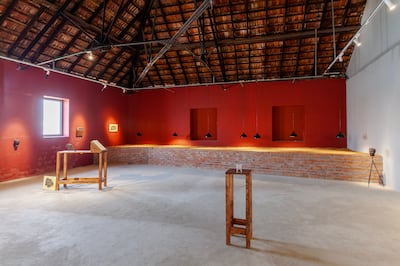
Amol K Patil investigates structures of power and how forms of resistance can be passed down along informal channels of communication – such as through families.
This solo show at the Hayward Gallery’s Heni Project Space is the first round of a collaboration between the Hayward and Kochi-Muziris Biennale, supported by the Durjoy Bangladesh Foundation. Patil will reprise his installation from last year’s Kochi showcase, using drawings, sculptures, kinetic objects and moving images to understand how labour and caste impact the body.
It also carries forward his own family’s tradition of activism: his father was an avant-garde playwright, and his grandfather a poet.
October 11 to November 19; Hayward Gallery, London
Rirkrit Tiravanija: A Lot of People, New York
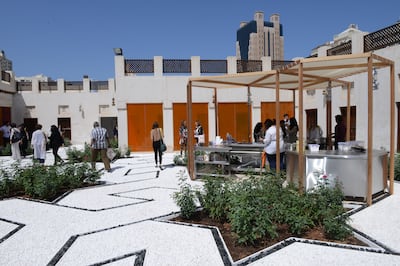
This major retrospective at New York’s MoMA offers the chance to look again at the work of Rirkrit Tiravanija, the Thai artist who was a crucial figure in the so-called Relational Aesthetics movement of the 1990s and early 2000s.
In some sense, the movement was sparked by his exhibition at 303 Gallery in 1992, where he served Thai curry to gallery visitors – an idea of art as a way to call together a social public that has become immensely influential since.
This will be one of the first opportunities to revisit the movement three decades on, and to consider Tiravanija as an artist separate from it.
October 12 to March 4; MoMA PS1 Contemporary Art Centre, New York
Guest Relations, Dubai

The follow-up to the Jameel Arts Centre’s inaugural exhibition Crude explores the cultural, ecological, social and political ramifications of tourism.
Curator Murtaza Vali looks at how the development of hotels offered neutral public spaces in cities like Dubai, while also ushering in tourists who were unfamiliar with local culture. It also shines a light on how the hospitality industry creates entertainment zones that are both part of and separate from the regular life of the city.
Guest Relations features artists such as Lamya Gargash, Hilmi Johandi, Ahmed Mater, Pio Abad, Michael Rakowitz, Lantian Xie and Ala Younis.
November 4 to April 28; Jameel Arts Centre, Dubai
Updated: September 14, 2023, 1:37 PM

